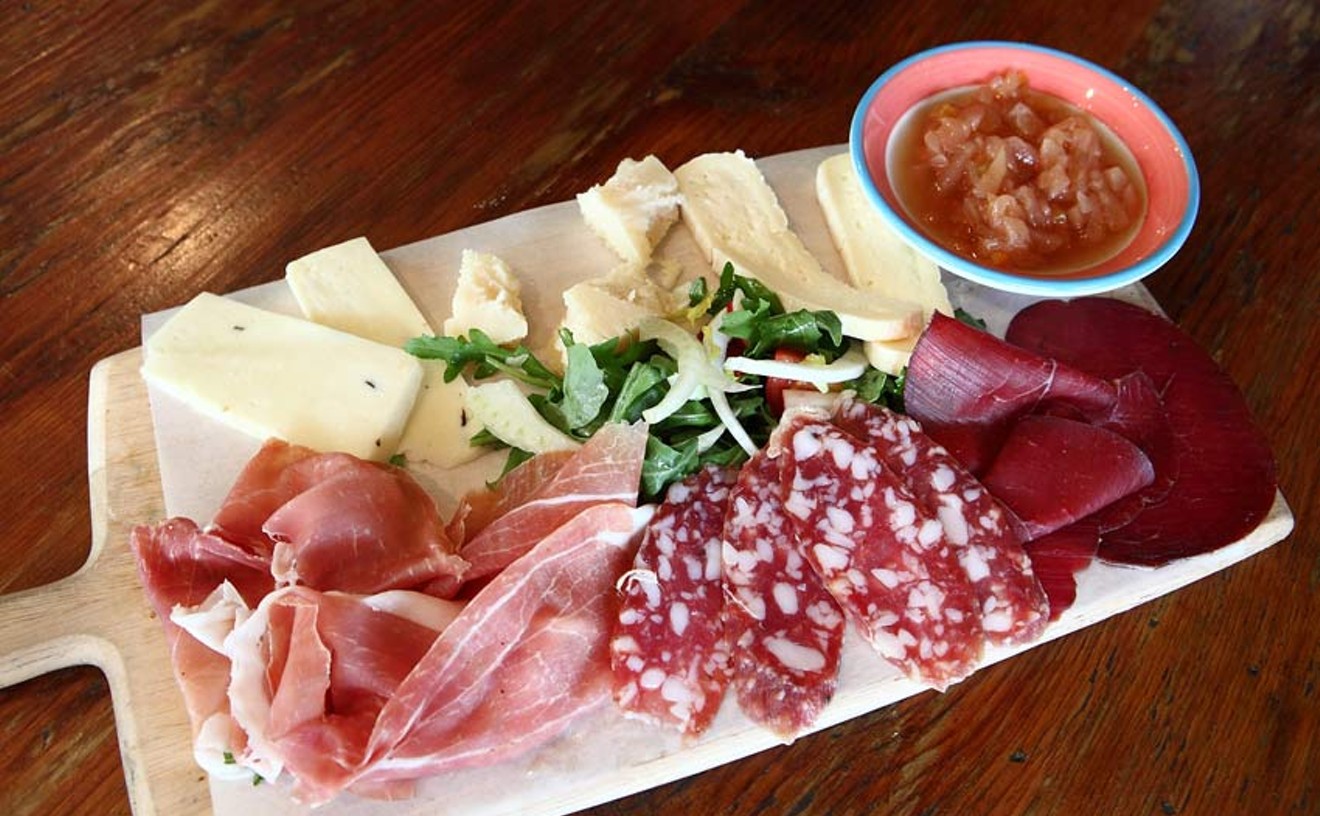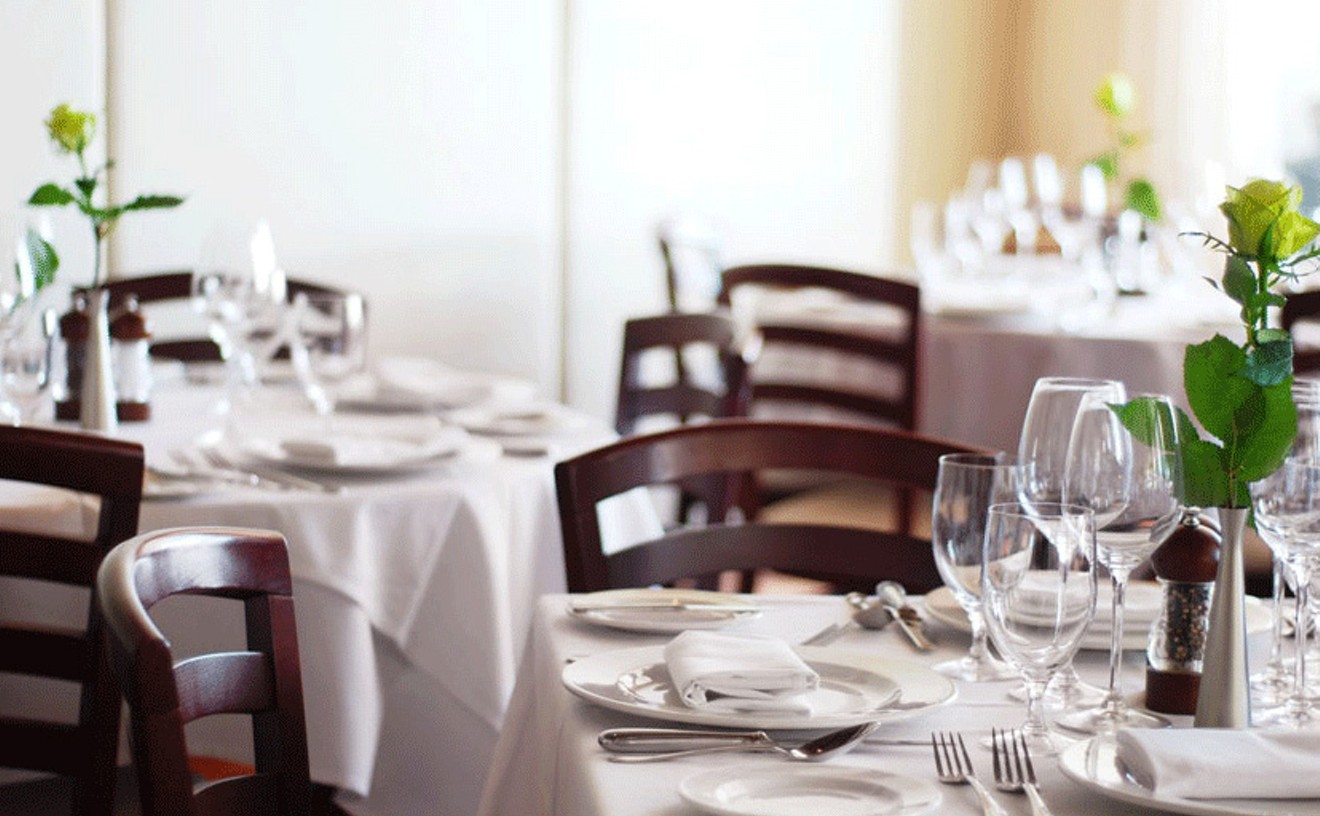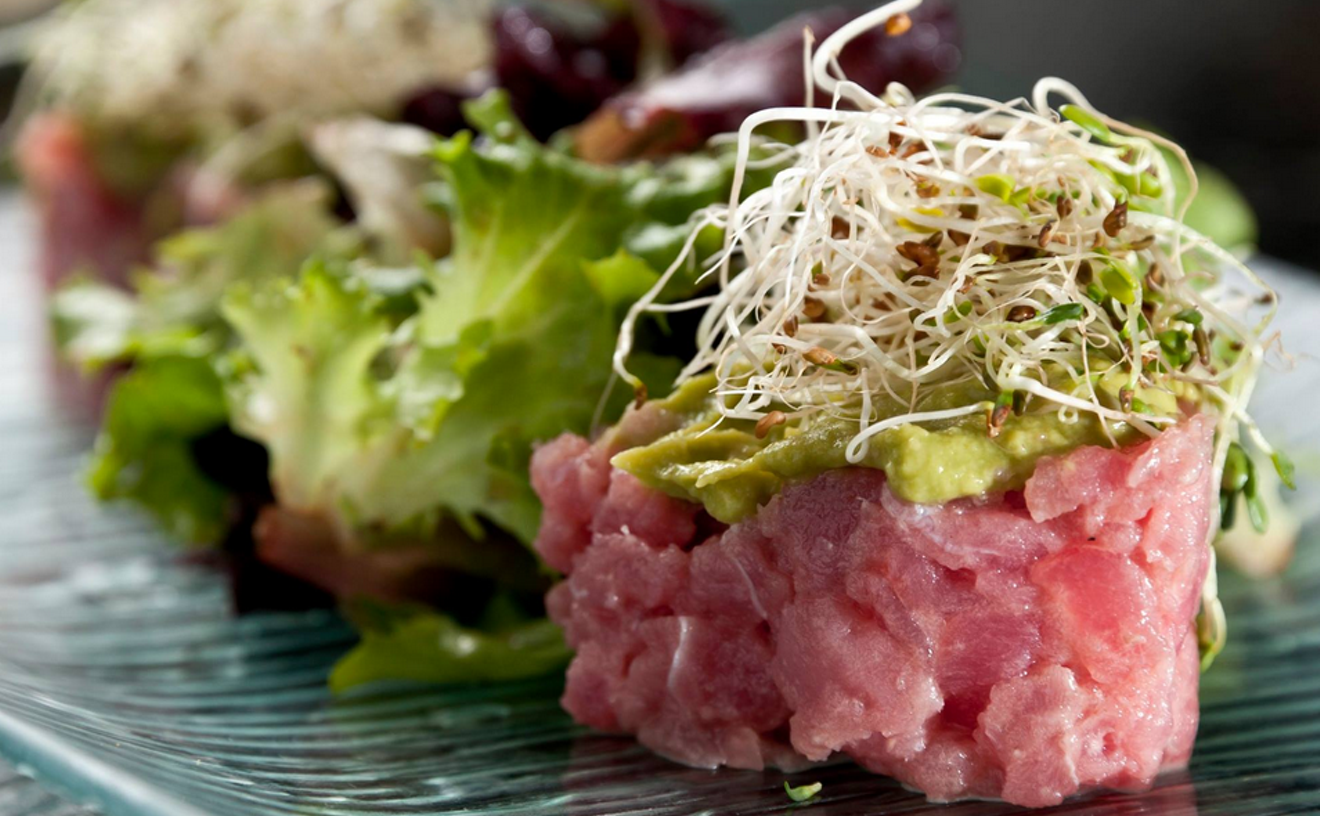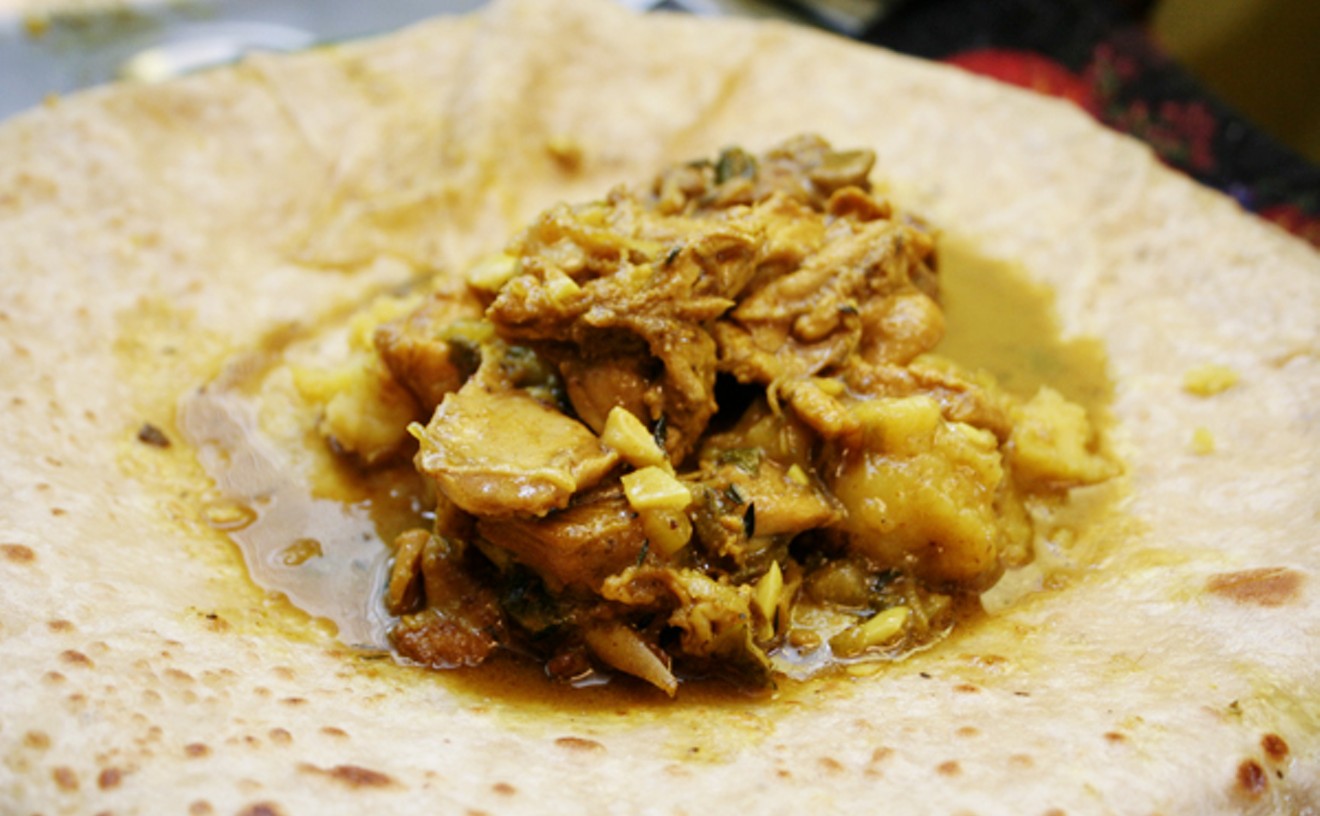We could start by making a joke at the expense of Coconut Grove's grim dining scene — such as how choosing the best restaurant in this area is like selecting the best Jewish football star. But that would be needlessly snarky. Besides, since Ideas Restaurant opened here in late 2006, the Grove has itself a star establishment to build upon. The chef, Alvaro Beade, hails from the Castilla y León region of Spain, and his cooking style is clean, vibrantly flavored, and highly innovative. Seafoods such as cuttlefish, lubina, and dorada (the last crusted in sea salt) are shipped from his country's Mediterranean coast, which makes Ideas ideal for a sumptuous fish dinner. Yet there is so much more to try, for no other Spanish restaurant in town serves dishes such as consommé of Serrano ham, carpaccio of king prawn, veal cheeks braised in red wine, and confit of suckling baby pig (entrées are in the $28 to $48 price range).The selection of wines is as distinctive as the cuisine, from the Verdejo whites of Rueda to the robust reds of Ribera del Duero. With a restaurant this fine in Coconut Grove, can an NFL quarterback named Moishe Schwartz be far behind?
Best Restaurant in Coconut Grove
Ideas Restaurant
Best Restaurant in South Beach
Sardinia Enoteca

Ever since Norman Van Aken copped our award for Best Restaurant in Coral Gables for 10 years straight, there has been an aversion to repeating winners in the same category. It's so lazy. So boring. So predictable. But when an establishment is as singularly rewarding as Sardinia, there really isn't much choice in the matter. Few restaurants re-create the ambiance and cuisine of another country as authentically, and none has chosen a more gastronomically interesting nation. Peerless antipasti platters are assembled from each diner's choice of imported meats, cheeses, roasted vegetables, and other tasty tidbits such as Castelvetrano olives tossed with wild fennel flowers. The Sardinian wines are unique, the Italian wines extensive. Whole octopus, rib eye steaks, and suckling pigs get smokily roasted in a roaring wood-fired oven, branzino crusted in sea salt, lamb and rabbit braised into stew (entrées run $26 to $38). Pastas, almost all under $20, include distinctive cuts such as paccheri and malloreddus, and hearty garnishings such as wild boar sausage and rabbit ragout. Ambiance and service, too, are a notch above the rest, and the hours are easy to remember: noon to midnight seven days a week. Could Norman's record be in jeopardy?
- 1801 Purdy Ave., Miami Beach, 33139 Map
- 305-531-2228
- www.sardinia-ristorante.com
Best Restaurant in South Miami-Dade
Cafe Pastis

Houdini would have been hard-pressed to match the magical act of Marseille-born, Paris-trained chef Philippe Jaccquet, who somehow produces a full menu worth of authentic Southern French bistro cuisine from a kitchen smaller than Richard Simmons' wardrobe closet. The cramped dining room is barely larger, but brightened with Gallic knickknacks and posters hanging from vibrantly colored walls. A favorite is the mussels and frites, and also steak frites — heck, we really like the frites, crisply culled from fresh potatoes and served in paper-lined tins. Other lunch and dinner specialties hit the spot in flavorful no-frills fashion, from escargots to bouillabaisse to steak in peppercorn sauce; from duck pâté with fig tapenade to lamb shank roasted in orange and thyme (appetizers average $10 to $15, main courses $11 to $21). It doesn't take sleight of hand to conjure an honest country meal here — except on Sundays, when Pastis is closed.
- 7310 SW 57th Ave., South Miami, 33143 Map
- 305-665-3322
- cafepastis.net/
Best Restaurant to Keep Warm on a Chilly Night
Con Tutto
During those uncommon evenings when there's a winter bite in the air, dining outdoors at Con Tutto can still feel like summer. The secret is to nab one of the outdoor tables closest to the grill, which is ensconced in a blazing brick furnace. As traditional parrillada components sizzle on the parrilla (flank and skirt steaks, sweetbreads, sausages, kidneys, and so forth), flames intermittently erupt and billows of smoke enshroud the diners. Crusty flautas; charred, thick-crust pizzas; and mile-high chivitos are also praiseworthy at this Uruguayan hole-in-the-wall on Calle Ocho. Of course on most Miami nights, it is advisable to seek those seats in Con Tutto's intimate alleyway courtyard that are farthest from the grill — although it depends on your preferred dining climate. People disagree about the merits of hot and cold weather all the time, but Con Tutto's prices are indubitably decent — the parrillada for one is $14.99, for two only $22.99. Everything else costs less. That's hot. And it's cool.
Best Restaurant When Someone Else Pays
Il Gabbiano

The chunk of Parmigiano-Reggiano that gets plunked upon your plate is complimentary. So are toasts piled with bright bruschetta, a plate of garlic-fried zucchini slices, and sourdough bread with olive oil. At the end of the meal, glasses of limoncello are poured — free of charge. Everything else at Il Gabbiano is priced sky-high, which also describes the quality of hearty New York-style Italian fare. Take, for instance, the pastas, homemade by an Italian pasta chef who worked with the owners during their decades-long success running Il Mulino in New York City — the porcini ravioli bathed in champagne sauce costs $38, but, as the getting-old cliché goes, the taste is priceless. Same standards apply to grilled calamari ($19), osso buco Milanese ($42), grilled branzino ($48), and a textbook tiramisu ($12). There are 200 wines and outdoor seating with a gorgeous vista of Biscayne Bay. Yes, it is all so very expensive, but only if you pay. The trick is to maneuver things so that someone else does (although try to avoid doing so on a Sunday — when Gabbiano is closed).
- 335 S. Biscayne Blvd., Miami, 33139 Map
- 305-373-0063
- www.ilgabbianomia.com
Best Restaurant When You're Paying
Dolores but You Can Call Me Lolita

This newcomer to the Miami dining scene is located on South Miami Avenue near downtown, but you can call it the old Firehouse Four building. The two-level restaurant is stylishly decorated, but you can call it duplex chic. For a prix-fixe charge of either $18 or $23, diners begin with a choice among some 15 soups, salads, and appetizers, plus an entrée selected from a listing under each price range, but you can call it a clever and appealing menu. Starters include watercress salad with marinated chicken and Serrano ham, duck and cheese quesadillas, and Vietnamese salmon egg rolls, but you can call them yummy. Eighteen-dollar dinners encompass pork tenderloin, short rib ravioli, and linguine with pesto and shrimp, and $23 gets you grilled Picanha steak, veal churrasco, or Kobe beef burgers, but you can call it all a great deal either way. A dozen wines are poured by the glass for $10 and under, and desserts such as mango carpaccio and coconut crème brûlée are $2.50 each, but you can call the person to whom you owe a dinner, invite him or her to Dolores but You Can Call Me Lolita, and call it money and an evening well spent.
- 1000 S. Miami Ave., Miami, 33130 Map
- 786-648-8400
- doloreslolita.com
Best Restaurants to Bite the Dust
Norman's and Pacific Time
David Bouley Evolution. Johnny V South Beach. Mark's South Beach. Restaurant Brana. Afterglo. Cafeteria. Duo. Frankie's Big City Grill. Karu & Y. The list of this past year's local restaurant victims is as lengthy as a dessert menu at The Cheesecake Factory. The closings that shocked this town most, though, were clearly Norman's and Pacific Time — two of only a few true Miami landmark dining establishments. Norman Van Aken's eponymous restaurant showcased his New World cuisine, a brilliant blend of Caribbean and South Florida ingredients. When Norman's opened in 1995, it became a nationally recognized oasis for cutting-edge contemporary American cooking; cookbooks and fame followed. Jonathan Eisman was likewise a pioneer, in more than one way. He was the first to recognize Lincoln Road's potential — hard to believe that in 1993 his Pacific Time was the pedestrian mall's only real dining option. And he was an early passenger on the Pan-Asian express, certainly the first in these parts to pair seafood with a fusion of East/West flavorings. Alas, two of our finest have gone, but Van Aken is still going strong with his Norman's at the Ritz-Carlton in Orlando, and Eisman is undoubtedly getting set to jump ahead of the curve once again.
Best Rib Sandwich
Levi's BBQ
On Fridays and Saturdays, a dirt parking lot behind a South Miami church comes alive with folks in search of Levi Kelly's succulent ribs. For $8 he'll give you a quarter rack of the crispiest, slow-roasted pork ribs anyone's ever tasted. If you like, he'll lay them on top of two pieces of white bread and slather them with delicious sauce. You'll spend about 45 minutes eating them. Or at least you'll want it to take that long. They're that good. So pull up a chair and get to know the man. Across the street, pick-up games of dice, poker, and dominoes run all night. But come during the day: You'll want to watch the children and families who pass through Kelly's little blue tent.
Best Roti/North
LC's Roti

Okay, there's no air conditioning, and random dancehall concert posters adorn the walls. But LC's Roti is the spot for the softest, freshest, and yummiest roti in North Dade. Located in a Caribbean strip mall off Stage Road 441 in Miami Gardens (see Best Jamaican Patty), the place regularly boasts a line come dinnertime. From homemade chickpeas and potatoes to juicy jerk chicken to conch and shrimp or even duck, have whatever you desire. You can even watch head chef and owner Elsie roll you up a big ol' fatty. You know you got yourself a good and authentic roti when dust of grounded-up dahl (yellow split pea) comes flying out from the bread's inner layers with every bite. Make sure to wipe your mouth, because dahl tends to leave you with a yellow moustache. And don't forget to come hungry. One of LC's Trinidadian burritos can last you days!
- 19505 NW Second Ave., Miami Gardens, 33169 Map
- 305-651-8924
- www.facebook.com/L-C-Roti-Shop-113869238644930/
Best Roti/South
Caribbean Delite

The treatment an American customer will receive in a typical Trinidadian restaurant in Miami is quite similar to that on the island. Trinis don't make a fuss over strangers. The oil-rich island doesn't need your tourist money, and the natives aren't falling all over themselves to lick your toenails. You'll notice that vibe at Caribbean Delite. It's friendly indifference. Nobody's trying to show you a menu, teach you how to order, or even pronounce the names of the exotic-sounding foods. "What's roti? What's the difference between paratha and dhalpurie?" you might hear a Yank wonder. There may or may not be a response from the store owner, so allow us to tell you how to pronounce them and what they are. Say roh-tee. Pah-rah-tah. Dal-poo-ree.
Roti is Trini soul food — curried meats reveal the Indo-Caribbean influence, although it isn't a traditionally East Indian thing. It's beloved throughout the West Indies, but based primarily in Trinidad. Picture a soft-as-a-baby's-blanket flatbread wrapped around chunks of curried meat and veggies. Yum. Roti is the name of the soft flatbread as well as the meal. At Caribbean Delite, you can order dhalpurie, which has a thin skin that reveals a sprinkling of dried chickpeas. Paratha (also known as buss-up-shut — "bust-up shirt" — for its torn, clothlike appearance) is served separately in a heavy Styrofoam box.; you do the rippin', dippin', and curry-wrappin' yourself with your bare hands. Oh yeah, roti is a food you devour eagerly with both hands, so leave your prissy American manners and expectations behind. Get the boneless chicken meal for $7.76, and be prepared to be full all day.
- 9491 SW 160th St., Palmetto Bay, 33157 Map
- 305-254-6606






